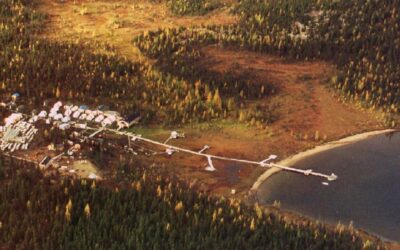This blog post was initially published in Saltwire
To meet global net zero commitments, Canada’s biggest economies are racing to compete in markets where demand is booming. New battery facilities are being built in Quebec. British Columbia is expanding biofuel production. In Ontario’s rust belt, car factories are retooling to make electric vehicles and steel mills are electrifying to dramatically cut greenhouse gas emissions.
The Maritimes have, by comparison, seen smaller, fewer, and less splashy low-carbon investments. Yet the region also shows strong signs of progress. Building on this early success is critical for scaling up new opportunities and securing the region’s future.
New analysis from the Canadian Climate Institute compares how different provinces are faring in capturing new, low-carbon economic opportunities. Clean growth momentum is evident in every part of Canada, including in the Maritimes.
The net zero transition will cause profound shifts to global markets. Some sectors, such as oil and gas, will see major drops in demand. Others, such as heavy industry and manufacturing, may benefit from buoyant demand but see intensifying global competition to minimize and eliminate carbon emissions.
The net zero transition is also creating new markets with significant growth potential. Demand in areas like low-carbon electricity, batteries and energy storage, industrial decarbonization, and low-carbon agricultural technologies is expected to skyrocket in the coming years. Each region in Canada, including the Maritimes, must find ways to capture these opportunities to future-proof their economies—protecting jobs and livelihoods in the global transition to net zero.
The Maritimes already have a running start. There are currently at least 50 companies dedicated to markets where global demand is expected to grow. Over three-quarters are headquartered in Nova Scotia.
Some of these newer companies are attracting significant private investment and successfully making deals with large incumbent businesses. New-Brunswick-based Resson and Nova-Scotia-based TruLeaf, for example, are working with McCain Foods to deploy their low-carbon agricultural technologies. Overall, Maritime companies dedicated to net zero opportunities have raised $225 million over the past 10 years, and that trend is accelerating.
The Maritimes are also developing areas of specialization through expertise in smart grids, batteries and storage, wind power, marine transport, small modular reactors, ocean technologies, and agricultural technologies.
Despite the region’s success to date, there’s lots of room to grow. In general, companies dedicated to net zero opportunities in the Maritimes are smaller, less profitable, and attract lower levels of investment than elsewhere in the country.
Nova Scotia leads the other Maritime provinces in attracting investment for companies dedicated to net zero opportunities, ranking third in the country. But even after adjusting for the size of each provincial economy, the two leading provinces of Quebec and British Columbia have raised more than three times the investment dollars that Nova Scotia has. Currently, the Maritimes have only one company (ARC Clean Energy) that has raised over $50 million in investments and only one publicly listed company (Meta Materials).
So, how can the Maritimes scale up new opportunities? Looking across the country, we can learn from other provinces that are de-risking innovation and attracting more investment to local net zero economic opportunities.
Clear, ambitious climate policy, including a predictable and long-term carbon price, can help to build investor confidence and investment attractiveness. Targeted policies like low-carbon building requirements and low-carbon rules for government procurement can help bolster local demand for Maritime companies.
Governments and economic development organizations can also help to connect Maritime companies with large buyers across Canada for their mutual benefit. The Maritimes is a small market, with a limited industrial base to host demonstration projects. Some Maritime companies are already seeing success through deployments elsewhere in Canada, like CarbonCure’s recent carbon-capture cement project at the Calgary International Airport.
For several years now, the Maritime provinces have led the country in decoupling GDP and jobs growth from carbon emissions. It is home to excellent academic research institutions and a small but growing cluster of companies that are ready to meet growing global demand for goods and services that will help meet net zero goals. The future for low-carbon jobs, companies, and innovations in the Maritimes is bright. But with larger provinces already staking their place in these new and growing markets, the Maritimes need to step up to secure their future economic success.








